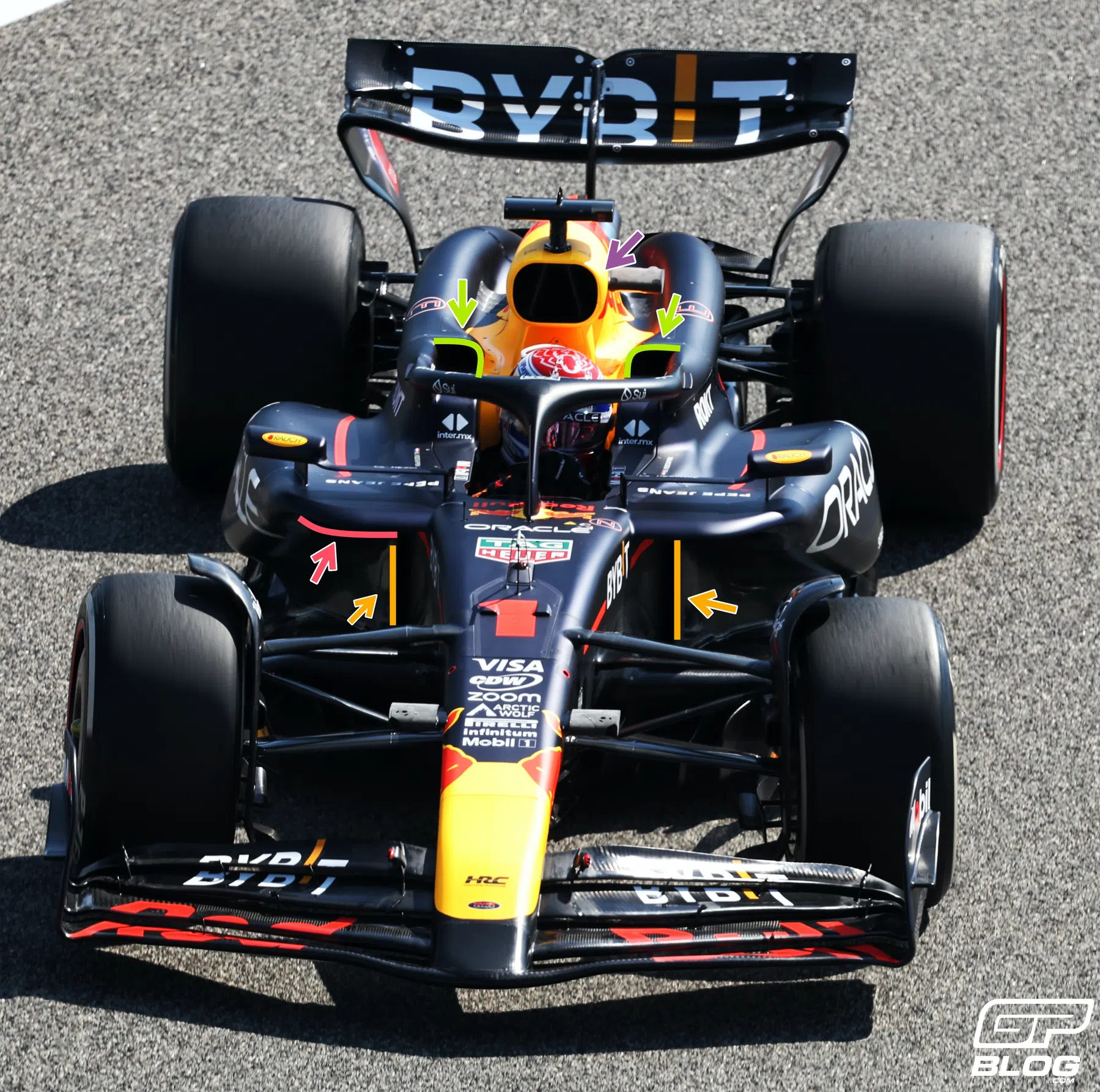Technical Analysis | How Red Bull are taking some of Mercedes’ failed ideas
Tech

Red Bull's RB20 hit the track this morning in Bahrain, showing off the real solutions adopted for F1 2024. This includes the new sidepod and cooling inlet design. The Milton Keynes team decided to follow some (failed) Mercedes' ideas and develop them to the extreme. Another aspect is that they decided to split up the cooling inlet into 3 smaller inlets to increase efficiency and possibly close or open some of these "slits" depending on the conditions during the different race weekends.
In contrast with the RB19, the RB20 presents a different configuration in the cooling inlet. Three different cooling sources can be identified by looking at the image below. The first is the "shark overbite" shaped inlet positioned under the long tray in the upper part (pink line and arrow). This inlet is very small and "hidden" under the long profile to exploit the flows that lap the lower part of this profile to use them for cooling the components.
The second cooling inlet is the vertical one, located on the sides of the chassis and already identified at the presentation, which takes inspiration from the by-pass duct of the SF-23 (orange line and arrow). Furthermore, the last inlet is placed behind the driver, near the square-shaped halo, corresponding to the entrance of the two gulleys, which push the air towards the rear beam wing (green line and arrow).
 This subdivision of the inlets, however, are overall smaller than the RB19, as the technical team directed by Adrian Newey also decided to enlarge the airbox, which now has a larger and rounder shape. This is proof that they have positioned more radiating masses in the upper part of the engine cover, which, therefore, requires greater cooling (purple arrow).
This subdivision of the inlets, however, are overall smaller than the RB19, as the technical team directed by Adrian Newey also decided to enlarge the airbox, which now has a larger and rounder shape. This is proof that they have positioned more radiating masses in the upper part of the engine cover, which, therefore, requires greater cooling (purple arrow).
It is particularly indicative that Red Bull decided to bring these solutions (already so extreme) to Bahrain, in hot environmental conditions, precisely to test the cooling efficiency of these solutions.

